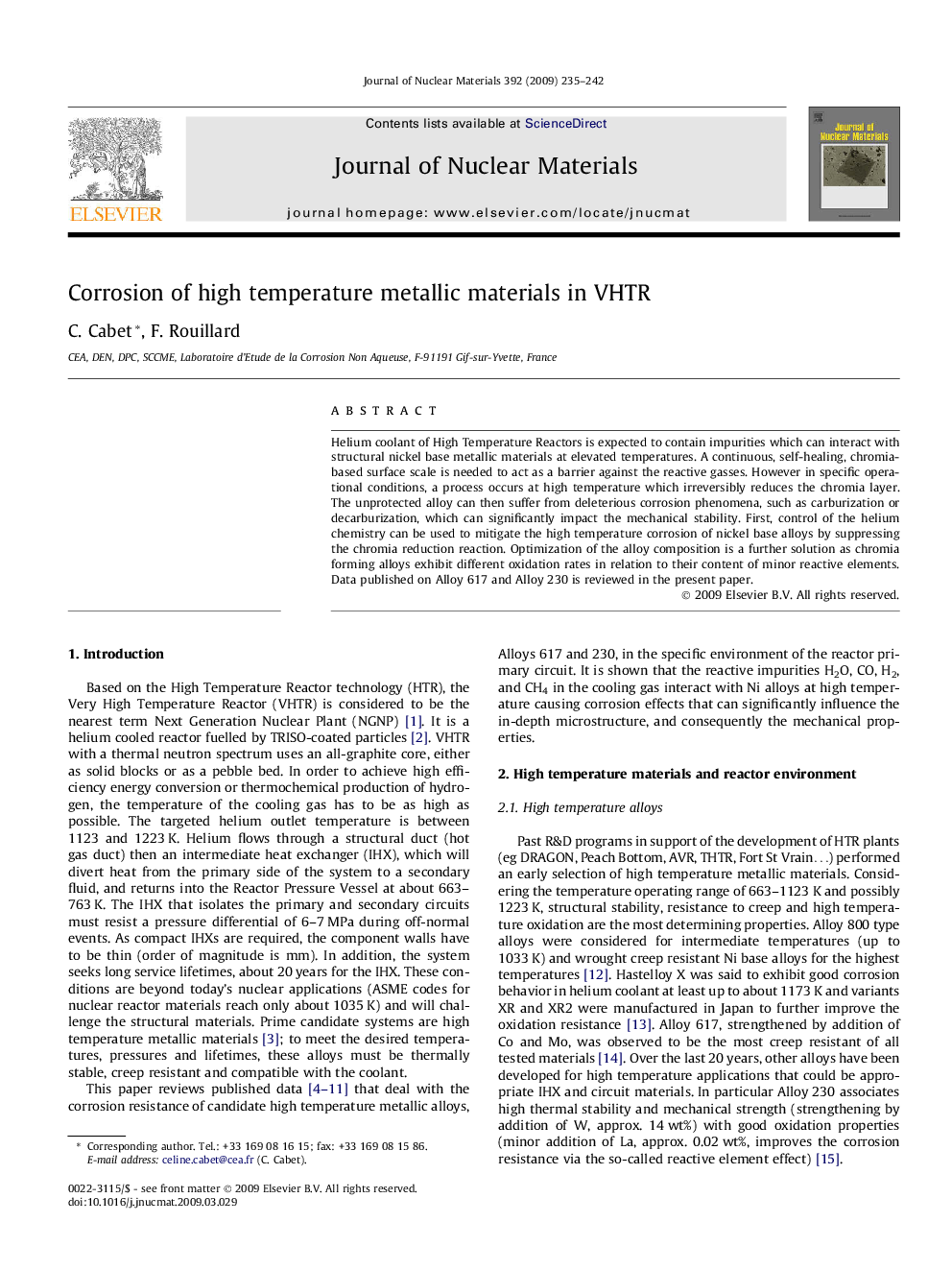| Article ID | Journal | Published Year | Pages | File Type |
|---|---|---|---|---|
| 1568417 | Journal of Nuclear Materials | 2009 | 8 Pages |
Helium coolant of High Temperature Reactors is expected to contain impurities which can interact with structural nickel base metallic materials at elevated temperatures. A continuous, self-healing, chromia-based surface scale is needed to act as a barrier against the reactive gasses. However in specific operational conditions, a process occurs at high temperature which irreversibly reduces the chromia layer. The unprotected alloy can then suffer from deleterious corrosion phenomena, such as carburization or decarburization, which can significantly impact the mechanical stability. First, control of the helium chemistry can be used to mitigate the high temperature corrosion of nickel base alloys by suppressing the chromia reduction reaction. Optimization of the alloy composition is a further solution as chromia forming alloys exhibit different oxidation rates in relation to their content of minor reactive elements. Data published on Alloy 617 and Alloy 230 is reviewed in the present paper.
